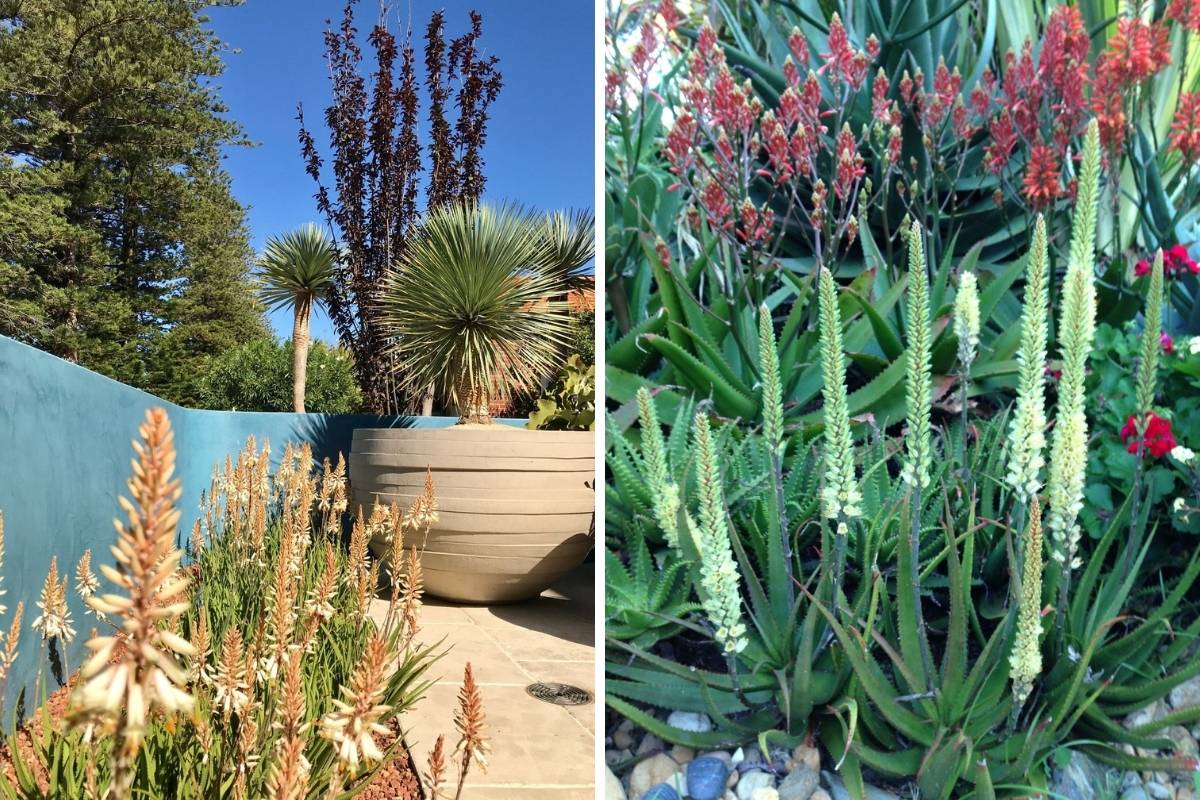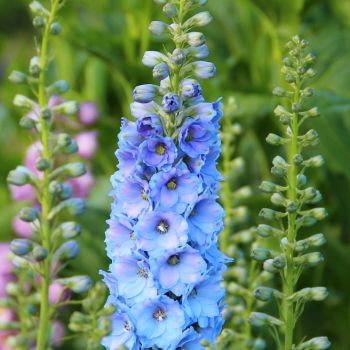If your garden could benefit from a splash of vibrant colour through winter, a flowering aloe may be just what’s needed. Ornamental aloes boast the ability to thrive in a wide range of climatic conditions and soil types and their long-lasting flower spikes make them ideal candidates for most garden situations.
Introducing Aloes
Aloe is a genus of more than 500 species of succulent plants native to Africa, Madagascar and the Arabian Peninsula. The name aloe comes from the Arabic word ‘Alloeh’, meaning ‘shining bitter substance’, likely a reference to the sticky sap found within the plants’ fleshy leaves. Aloe vera is perhaps the best known species of aloe, long valued for its medicinal qualities. Among the other aloe species, however, modern flowering hybrids have emerged as garden favourites, and for good reason.
Ornamental Aloes in the Garden
One of the great advantages of growing ornamental aloes is their versatility. They’ll thrive whether exposed to dry conditions, frequent rainfall, coastal winds or the splash from a swimming pool. Mass planted, aloes lend architectural structure and modern style to garden beds and pots. But they also work well mixed in with other ornamental plants, their fleshy leaves providing textural contrast and the flowers appearing just when most plants begin their winter rest period. With their nectar-rich blooms, aloes also fit well in wildlife gardens where they will attract birds, bees and butterflies.
How to Grow Ornamental Aloes
Aloes are true low-maintenance plants, and cultivating them is straightforward. Here’s what you need to know to establish and care for your plants.
Preparation
Most flowering aloes require a position in full sun, although some, like Fairy Pink, can tolerate part shade. They can withstand occasional light frosts but need protection in climates that experience regular cold snaps.
Flowering aloes thrive in open, free-draining soil, but grow best when nutrients are readily available. Add organic matter such as cow manure or homemade compost to the soil prior to planting. In pots, a potting mix for cacti and succulents is a good option.
Before planting, consider the mature size of the plants to determine their spacing and placement. Plants can become top heavy over time, so take this into consideration when selecting pots. Terracotta pots that are relatively heavy and keep soil well drained are a good option for container culture.
How to Plant Bare-Rooted Plants
- Dig a hole at least four times the width of the root ball to provide ample space for the roots to spread.
- Plant the aloes with the base of their leaves level with or slightly above the soil line. Do not bury the stem.
- Use bamboo canes or stakes to provide support until the plants are firmly rooted in the soil.
- Water newly planted aloes thoroughly and apply a weak solution of liquid fertiliser or seaweed extract. Then hold off watering for a few weeks to allow plants to establish, resuming watering weekly or as needed from then on.
Ongoing Care
One of the attractions of aloes is that they are relatively low-maintenance plants. While plants can be left to look after themselves, a little attention can go a long way in promoting healthier growth and more abundant blooms.
Remove spent flower spikes at the base to keep plants neat and tidy after flowering. While aloes don't require frequent watering, and will usually survive on rainfall alone, they can benefit from some extra water during dry spells.
Continue to improve soil quality by adding cow manure or other organic matter in autumn and spring. Finally, don’t be afraid to prune and shape your flowering aloes to maintain the desired size and appearance.
Pests and Diseases
Australia is free of some of the major pests that can attack aloes, including a destructive type of weevil called the snout beetle. Most pests will cause only cosmetic damage to the leaves. Stressed plants or those grown in too much shade can, however, occasionally fall prey to aphids, mealybugs and scale, which should be treated in the usual way.
Though not common, gall mites (Eriophyid mites) are microscopic, wind-borne insects that can attack aloe plants. They cause deformed leaves and flower spikes, or orange or red growths where the leaves meet the stems. Damage on larger plants can be pruned, taking all distorted growth plus some of the healthy growth surrounding it. To stop their spread to other plants and be certain of eradication, though, whole plants should be removed, bagged and placed in the general garbage.
Root rot is usually a sign of over watering. Unlike many other plants, root rot in aloes need not be fatal. Often the below ground, rotten part of the root system can be pruned off and the rosette of leaves, with a little stem intact, can be treated like a cutting, placed in a container with free-draining potting mix, and left to form new roots.
With their adaptability and low maintenance requirements, flowering aloes are a fantastic choice for anyone who wants to add easy care, year-round colour and interest to their garden.









